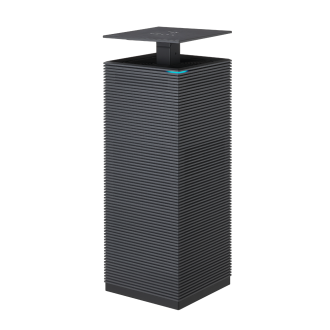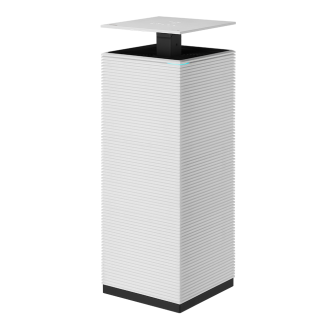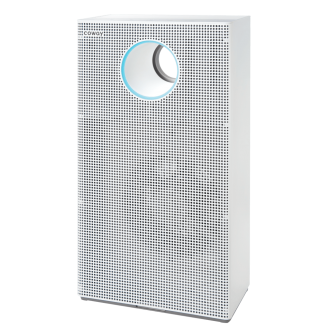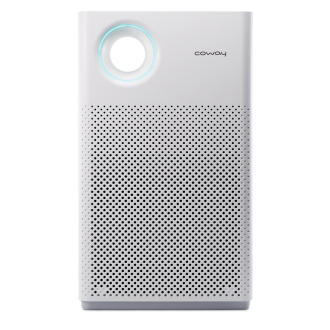Many people rely on refrigerators with built in water filter systems for their drinking water at home, but refrigerators are far from your best option when it comes to home filtration. Below are five reasons to avoid refrigerator filters:
1) Refrigerators use a weak type of filter.
Refrigerators typically use single-stage granular activated carbon (GAC) filters. When used properly these filters are capable of removing sediment like dirt and rust as well as organic compounds, chlorine, and odor. This type of filter is also found in pitcher filters and faucet-mounted filters. However, these types of carbon filters often provide substandard filtration due to their small size. Carbon filters work by adsorbtion whereby contaminants stick to carbon particles in the filter. The comparatively small size of refrigerator filters means that the water comes in contact with less carbon as it flows through the filter, meaning less contaminants are removed when compared to larger systems. Additionally, carbon filters are not able to remove contaminants such lead and other heavy metals, bacteria, fluorides, nitrates, or many inorganic chemicals. Moreover, refrigerator filters won’t have an effect on calcium or magnesium, which are responsible for “hard water.” Refrigerator filters are a convenient option for water filtration due to their ease of access and speed of filtration, however these features come at the cost of reduced filtration capacity.
2) Refrigerator filters that are not replaced properly are prone to contamination.
Most refrigerator filters need to be replaced every six
months. However, many refrigerator owners may forget to replace the filter or
avoid the hassle of replacing it. Often, the filters in home refrigerators have
never received a filter replacement. When a filter is used beyond its intended
usage period, the quality of filtration is reduced. Filters can become clogged
with deposits and the activated carbon in the filter can become saturated with
contaminants leading to reduced efficacy. When filters are used beyond their
replacement cycle, more contaminants are left in the dispensed water, which can
negatively affect the taste, clarity, and safety of the drinking water. More
minerals will be left in the water as it leaves the filter which can create
build-up in the refrigerator piping, eventually leading to clogged or broken
piping.
3) It’s difficult to open and clean the refrigerator water filter and dispensing components.
The National Sanitation Foundation found that refrigerator water dispensers and ice dispensers are a couple of the germiest kitchen items. Cleaning the components found in the water and ice dispenser requires taking apart the system and using special cleaning solutions and cleaning tools. This lengthy and difficult process is made more cumbersome due to the large size of the refrigerator; accessing the water line to flush any impurities is often not possible for refrigerator owners. It is recommended that this difficult cleaning process is carried out once or twice a year depending on usage, although it is often the case that refrigerator owners have never cleaned the components of the water filter and dispenser. Eventually contaminants such as bacteria and calcium will build up in the water lines, leading to unsanitary drinking water and potentially damaging the components of the water dispenser. One specific area that is exposed the most, the dispenser spout, is especially prone to contamination. Buildup of bacteria, yeast, and mold on the spout can affect the safety of the drinking water and even affect individuals with allergy sensitivities.
4) Refrigerators lack adequate tank capacity for filtered water.
Standard refrigerators have a water tank capacity of less
than 32 fl. oz. Many hold even less: only about two glasses of water. This is
because many refrigerators, especially newer models, don’t have a dedicated
storage tank for purified water. If the refrigerator does have a water tank
reservoir, it is often small in capacity to maximize the storage space in the
refrigerator itself. For larger families, households that frequently host
guests, or anybody that drinks a lot of water, this decreased capacity can cause
unnecessary inconveniences. Additionally, this limited water capacity results
in water that isn’t chilled properly and slow dispensing. Water is chilled as
it is held in storage in the inside of the refrigerator. If the filtered water was
not held in the fridge for long enough or if the water was previously drained,
the dispensed water may be inadequately chilled and will dispense slowly.
5) Refrigerators can only dispense cold water.
Refrigerator water dispensers only dispense water that has
been chilled during the filtration process. Although chilled water may be good
for drinking in summer, many people prefer drinking room temperature water or
hot water, especially when the outdoor temperature drips. For those using an electric
kettle to make hot water, the choice needs to be made between using cold water from
the refrigerator filter or using unfiltered water. Using cold, filtered water
is an inefficient use of the kettle and using unfiltered water can leave deposits
and damage the kettle. Beyond drinking, cooking can require the use of filtered
water. Adding cold water while the food is hot could interfere with the cooking
process. For example, adding cold water to a soup that’s too salty can quickly
alter the temperature of the soup and affect the quality of the food. Other
instances in ingredient preparation, baking, or cooking may also require hot or
room temperature water, options unavailable to those who only rely on their
refrigerator water dispenser.
Coway USA offers reverse osmosis water filtration systems with
various water dispensing temperature options. For better, certified filtration
and customer-centered usability, choose Coway. See our full line of water purifiers
here.























-1820x930.jpg)
-1820x930.png)
-1820x930.jpg)


-1820x930.jpg)


-1820x930.jpg)



